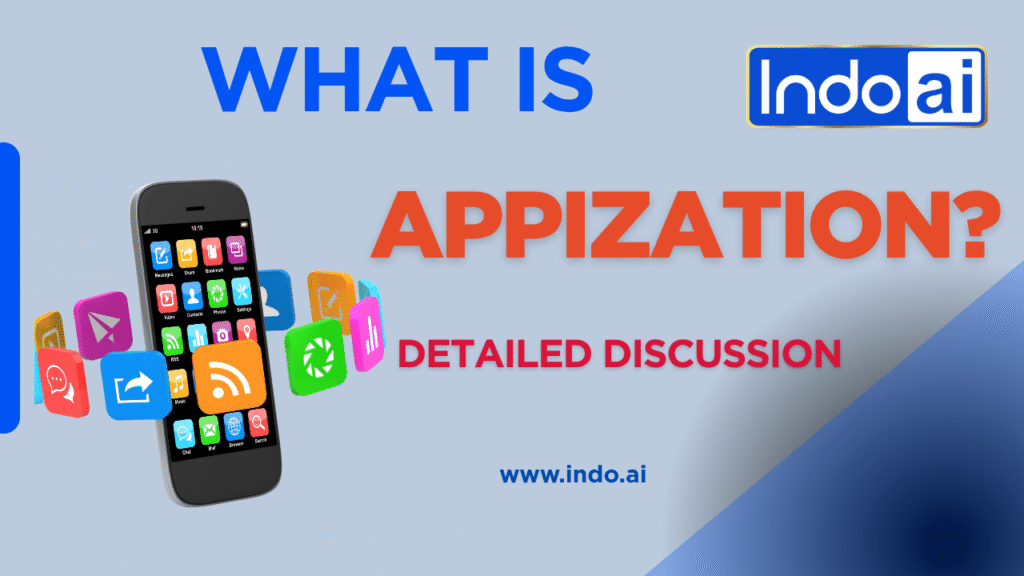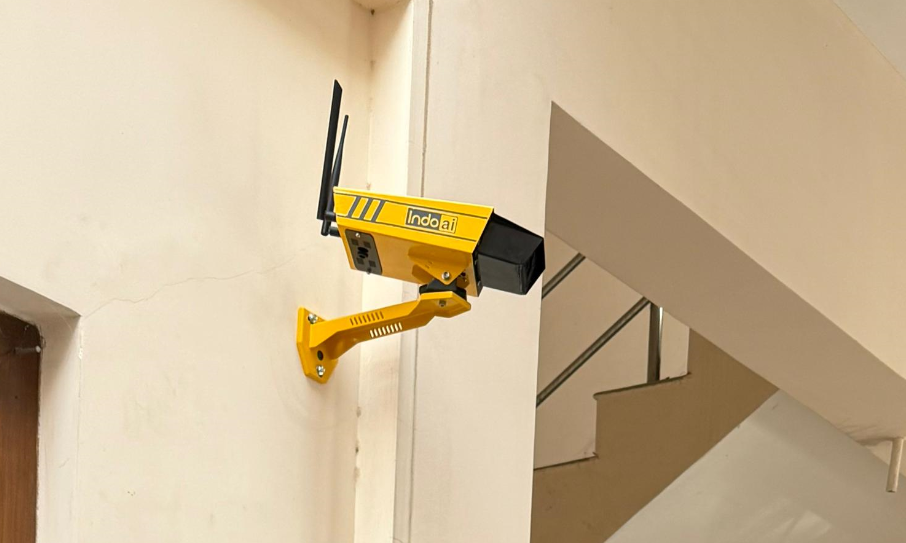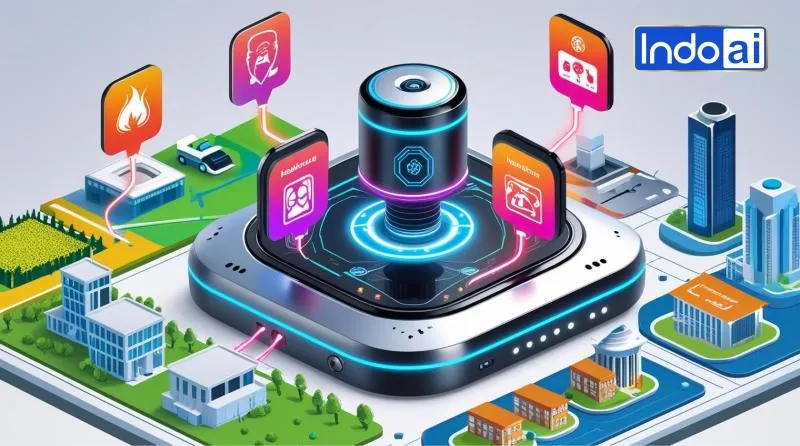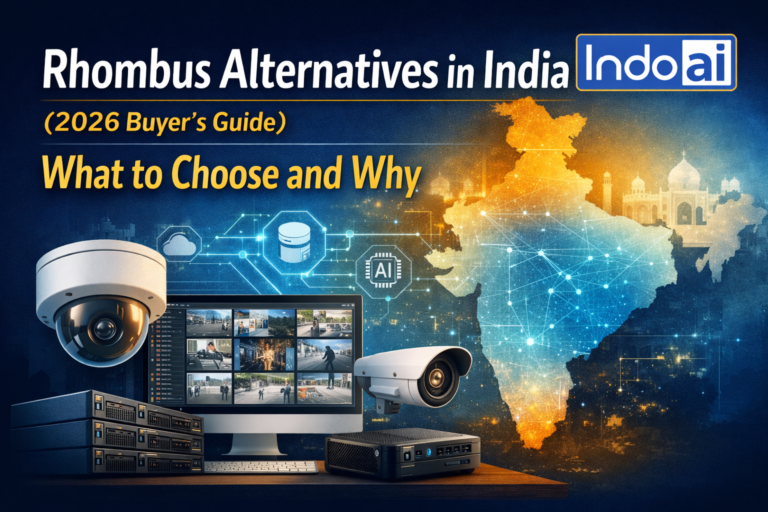
Introduction
To understand Appization, it’s helpful to look at the evolution of the mobile phone industry. In the early 2000s, mobile phones had specific, built-in functions: calling, texting, and maybe a calculator. Then came smartphones with app stores—Apple’s App Store and Google’s Play Store—which allowed users to download applications that transformed their devices. Suddenly, phones could be navigation tools, music players, cameras, and gaming consoles. By 2023, the global app market had grown to over $365 billion, with millions of apps available for every conceivable purpose.
Appization brings a similar revolution to IndoAI’s Edge AI cameras. Rather than being limited to a single purpose, like traditional CCTV cameras, these cameras can be enhanced by downloading and deploying custom AI applications. Much like apps on a smartphone, these AI applications allow customers to tailor their cameras to meet different needs. Whether it’s using facial recognition in a retail environment, monitoring patient activity in healthcare, or optimizing traffic flow in smart cities, Appization turns the camera into a versatile, upgradeable tool.
Appization means that organizations can not only deploy AI models but also update and swap-out existing models the very same way they would download an app. Appization offers unprecedented flexibility, cost-effectiveness, and scalability – which we will examine in this paper. Additionally, we will illustrate how Appization could be a game-changer, allowing organizations to innovate and deploy new technologies faster while balancing adherence to security, quality and compliance requirements.
The Limits of Conventional AI Deployments
Traditional AI Solutions usually require an enormous amount of engineering work. It is common to envision a process where data scientists identify model training, DevOps align on containerization, and this leads to deployment of updated models to purpose-built servers (or properly isolated – application-agnostic special hardware). Once the model is deployed, any change in business requirement leads to another loop of coding, testing, and validation.
This process can take months and cause the delivery of essential capabilities to be delayed. In addition, tightly coupled architecture limits the opportunities for incremental change. The architecture becomes unwieldy, and the system can feel brittle, darkening the opportunity for innovation. Because security and/or model updates often include unintended consequences throughout the stack, there is inherent risk from making these alterations. Traditional systems are not equipped to support today’s modern, agile enterprises.

How IndoAI Cameras Leverage Appization Modules
IndoAI, a pioneer in edge AI solutions based in India, has integrated Appization within the core architecture of its smart camera ecosystem. Instead of sending cameras with rigid, pre-made capabilities, IndoAI allows users to select, install, and maintain AI capabilities like modular apps.
Each IndoAI camera—Core, Edge, or Pro—comes with a standard runtime environment. This means that businesses can quickly install any number of AI applications (like smoke and fire detection, face recognition, intrusion events, license plate recognition, etc.) without having to change any hardware whatsoever. These AI modules run as standalone, containerized apps. Users can quickly download these AI apps (or update them) on IndoAI’s simple interface.
Here’s how IndoAI implements Appization in practice:
- Modular AI Model Store
IndoAI maintains a growing repository of AI apps optimized for edge inference. Businesses can select use-case-specific apps and deploy them instantly on any compatible IndoAI camera. - Plug-and-Play Deployment
Just like installing an app on a smartphone, users can activate new AI features in seconds. For example, a retail store can start with people-counting and later add theft detection—without replacing the camera. - Hardware-Agnostic App Execution
IndoAI’s cameras are equipped with GPUs and onboard inference engines. The apps are hardware-optimized but not hardcoded, which means one device can evolve with new use cases over time. - Secure & Scalable Updates
All app packages are digitally signed, encrypted, and version-controlled. IT teams can deploy updates across a fleet of cameras with minimal disruption and full traceability. - Multi-App Concurrency
Higher-end IndoAI models (like the Pro tier) can run multiple apps simultaneously. A single device can monitor worker safety, detect smoke, and recognize license plates—all at once.
This architecture is an example of Appization as a real-world industrial product—not a concept of the future but a now competitive advantage.
By allowing scalable, secure and adaptable AI deployment, IndoAI demonstrates how Appization can foster digital transformation in manufacturing, retail, education, and infrastructure.
IndoAI doesn’t just follow the Appization trend—it defines it.
Key Advantages of Appization
1. Speed to Market
Organizations can leverage Appization to deploy advanced AI capabilities in a few days versus months. Merged into an enterprise-controlled repository, the only component of the system that requires testing is the new unit or model, not any other part or function of the system. Once the approval step is completed, the new app will install with a single button press, with no manual configuration required, and the downtime is minimized.
The convenience and flexibility will enable organizations to respond much faster to new challenges, whether they are seasonal demand shifts or new safety regulations, at a better cost than overall, you can provide them as needed.
2. Scalability and Flexibility
Appization decouples AI innovation from any hardware limitations. The same AI app has no dependency whether the AI is running at the edge, on on-premise servers, or in cloud instances. With decoupled dependencies, it provides a simpler transition from a pilot to a larger scale full production rollout. Additionally, it allows mixed deployments where different AI apps share the same platform for multiple simultaneous use cases.
3. Reduced Total Cost of Ownership
Traditional AI implementations have huge costs in development, integration, and ongoing maintenance. Appization decides costs by standardizing the runtime environment and minimizing changes to the entire system. When new models supplant existing legacy models there is no need to upgrade the hardware. Operational teams use established app-management interface to apply updates, reducing training and support costs.
Quality and Trust
- Experience: AI apps can be tested extensively in controlled environments before public release. Field‑tested models backed by real‑world data ensure predictable performance.
- Expertise: AI developers publish detailed documentation, version histories, and performance benchmarks for each app. This transparent approach demonstrates technical mastery and instills confidence in end users.
- Authoritativeness: A centralized AI‑app store is curated by a trusted governing body or vendor. Each submission undergoes rigorous peer review, security audits, and compliance checks before publication.
- Trustworthiness: Secure signing of AI apps prevents tampering. Role‑based access control governs who can install or update models. Encrypted communication protects data in transit. This robust security framework meets industry standards and regulatory requirements.
Technical Architecture of an Appized AI Platform

In Appization, the underlying standardization is a runtime environment defined by a lightweight container engine that is optimized for AI workloads, in addition to a model-management API and secure channels for injecting updates. Appization utilizes packages containing trained models, inference code, metadata on input/output formats, and digital signatures, ensuring the integrity of the packages via a validation business process on runtime activation, along with compatibility checks and trades when deploying a new package.
Once a package is executing, each application is run in a vetted runtime environment and isolation via secure sandbox, helping enforce fair use of resources, while preventing one application from interfering with another application. Appization includes monitoring services that collect metrics—latency, throughput, and error rates—and through secure channels, feed performance metrics back into the development pipeline and enhance continuous improvement. Creating a continuous feedback loop fuels iterative improvement towards a virtuous cycle of greater innovation and reliability.
The Future of Modular AI
With the accelerating growth of AI solutions, the need for speed, accuracy, and scale will continue to accelerate, and Appization is designed to take traditional monolithic AI solutions and convert them from static to agile, and composable ecosystems. Federated learning and on-device personalization are examples of powerful trends that will push the take-up and acceptance of modular AI.
Imagine a world where AI applications process user interaction data, respecting the privacy of the data and utilize the referenced data to automatically update applications on millions of edge devices. Together, modular deployment and dynamic learning can deliver new intelligent applications suited perfectly to each environment and use.
Conclusion
Appization signifies a fundamental change in how organizations develop, deploy, and manage AI solutions. Businesses can unlock new levels of speed, flexibility, and cost effectiveness by treating AI models as modular apps.
You can also Read: Appization: The Power Behind IndoAI’s Edge AI Cameras



